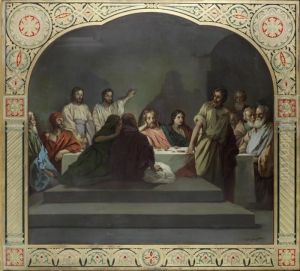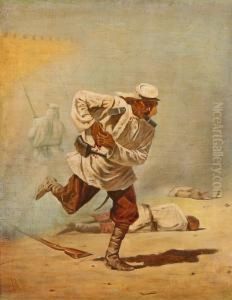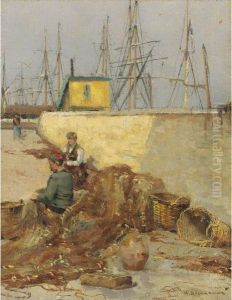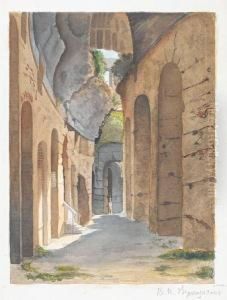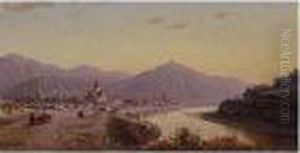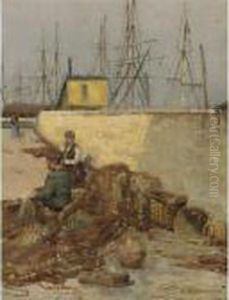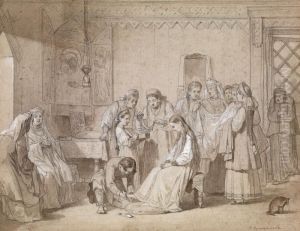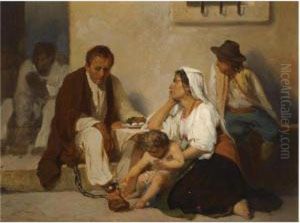Vasily Petrovich Vereschagin Paintings
Vasily Petrovich Vereschagin was a prominent Russian artist, known for his war-themed paintings and for being one of the most famous Russian battle painters of his time. Born on October 26, 1842, in Cherepovets, in the Novgorod Governorate of the Russian Empire, Vereschagin was part of a noble family. He initially enrolled in the Saint Petersburg Naval Cadet Corps, but his passion for art led him to abandon a military career. He went on to study at the Academy of Arts in Saint Petersburg, and subsequently in Paris under the tutelage of the French painter Jean-Léon Gérôme, who was known for his historical and orientalist themes.
Vereschagin's experiences in the military had a profound impact on his artistic work. He traveled extensively, visiting various battlefields and documenting the horrors of war. His travels took him to the Balkans, Central Asia, India, the Philippines, and Russia, among other locations. Vereschagin's paintings are often characterized by their realistic portrayal of military life, the brutality of war, and the human suffering involved. He sought to convey a pacifist message through his art, debunking the glorification of war and emphasizing its tragic consequences.
Among his well-known works are the 'Turkestan Series', inspired by his travels in Central Asia, and the 'Balkan Series', which focused on the Russo-Turkish War (1877–78). Vereschagin's paintings were sometimes met with criticism for their graphic nature and unflinching depiction of death and violence, which challenged the romanticized view of war prevalent at the time.
His commitment to realism and the intensity of his subject matter were groundbreaking, and he is often credited for introducing new subjects into Russian painting. Vereschagin's work had a significant influence on the development of Russian art, and he was one of the first Russian artists to achieve widespread recognition abroad. Notably, he was also among the first artists to include himself in his paintings, a precursor to the modern selfie.
Tragically, Vereschagin's life was cut short when he died on April 13, 1904, aboard the Russian battleship Petropavlovsk after it hit a mine during the Russo-Japanese War. His death was in line with the themes that dominated his work; he passed away as a witness to the very violence he depicted so powerfully in his art. Today, Vereschagin's paintings are displayed in museums around the world, standing as a powerful testament to his talent and his commitment to depicting the true cost of war.
